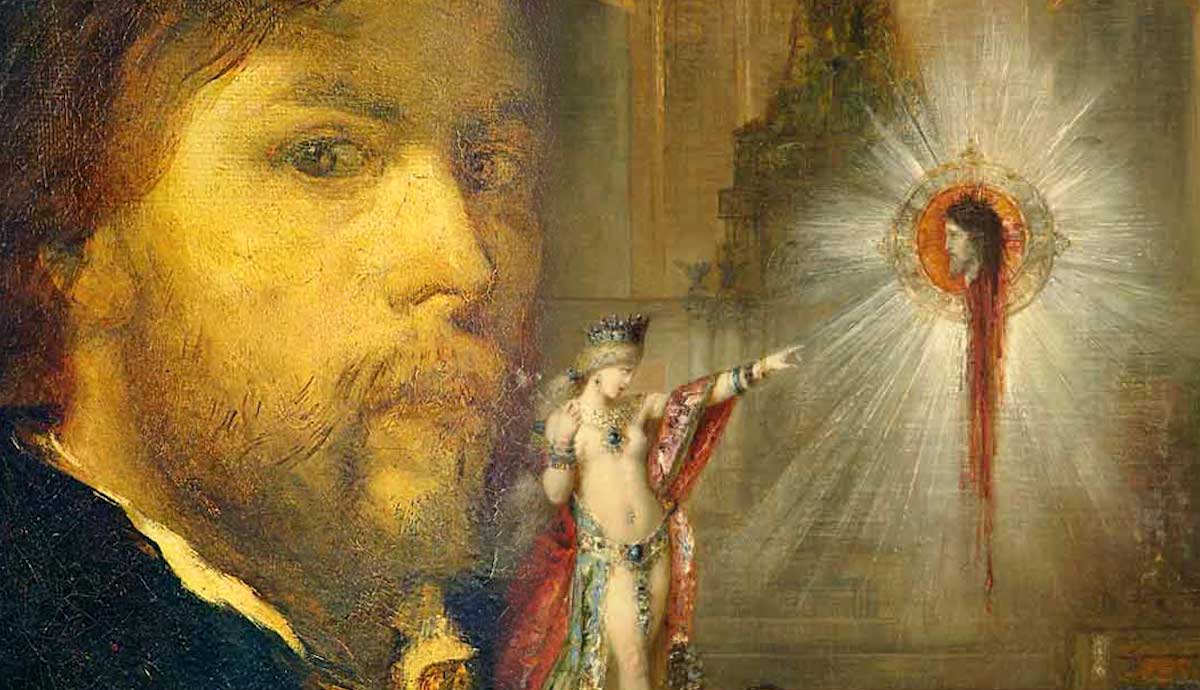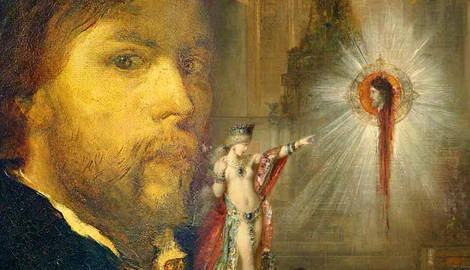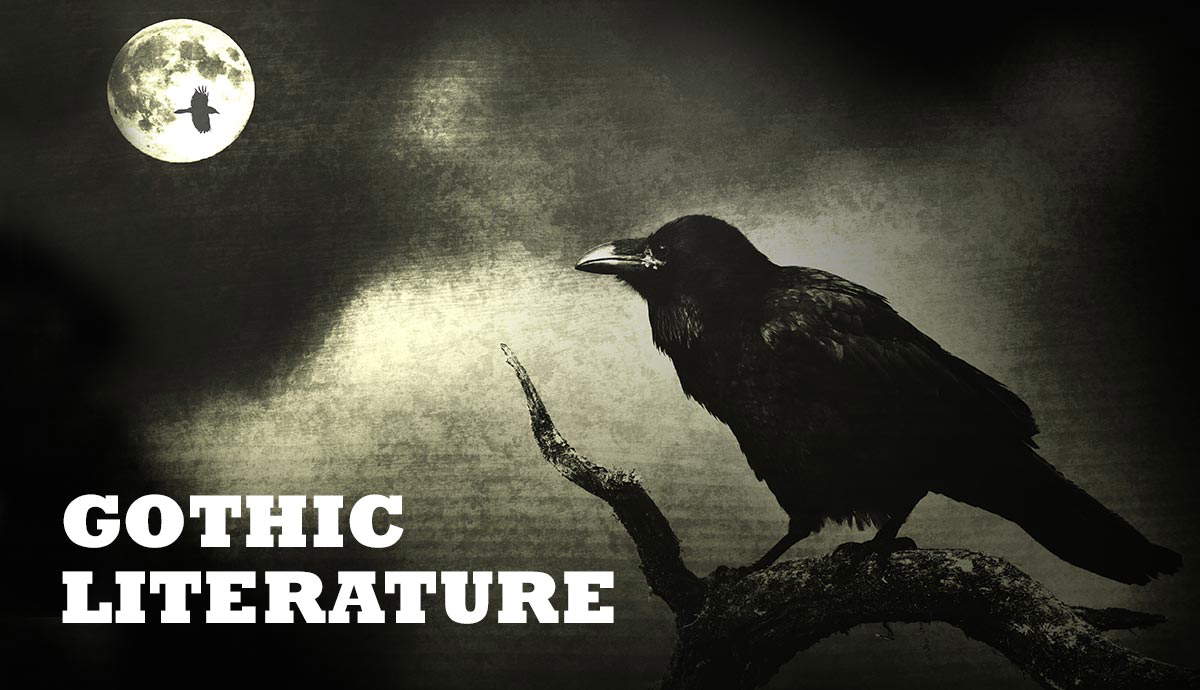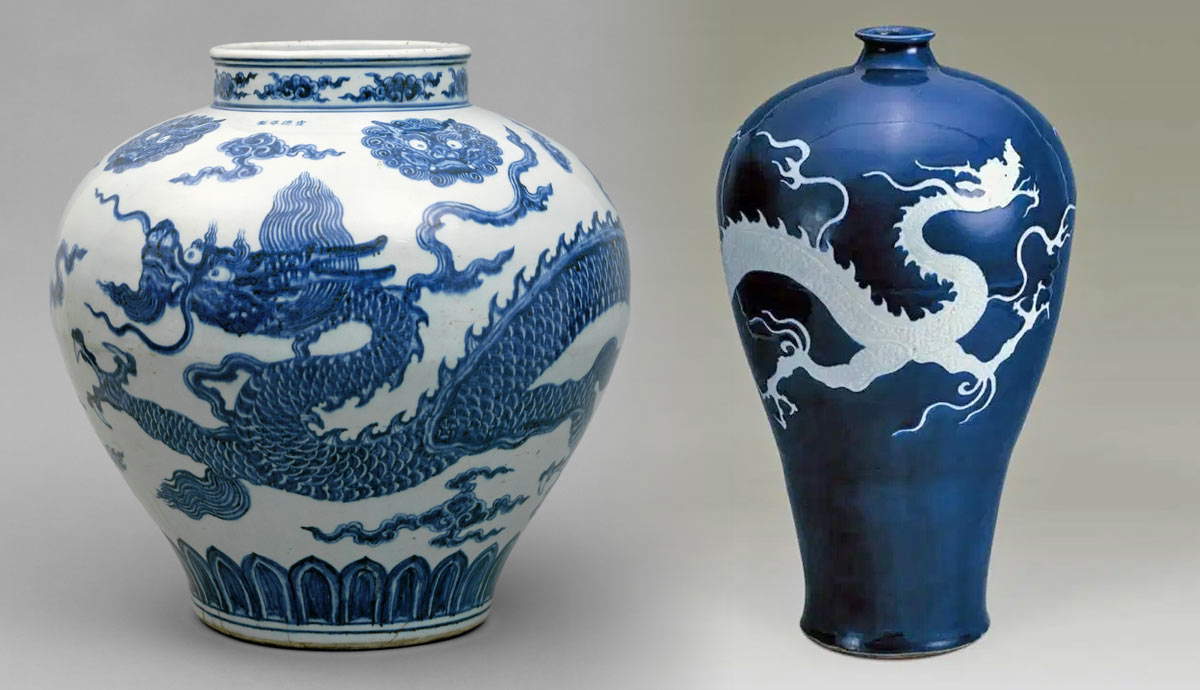
The late 19th century was a time of political and social upheaval in France. In response to the changing cultural landscape, a small group of writers and artists struck out in defiance of the literal, natural art popular at the time. They turned their focus inward, using their imaginations, emotions, and even dreams of creating art that resonated with viewers on a spiritual level. Foremost among artists associated with the Symbolist movement was French painter Gustave Moreau.
Background to Moreau & Symbolism: Late 19th Century France

The political climate of France in the late 1800s was tumultuous, to say the least. The French Revolution had seen the monarchy dismantled at the turn of the century, but after just 15 years – during which time Napoleon Bonaparte managed to overthrow a democratic government, crown himself emperor, and be overthrown himself – the Bourbons were back on the throne. This time, however, they were bound by the constraints of a constitutional (rather than absolute) monarchy.
Unfortunately, this arrangement would be short-lived. In 1830, after attempting to enforce a series of unconstitutional edicts, King Charles X was deposed. The insurrection placed Louis-Philippe, Duke of Chartres, on the throne. Louis-Philippe had spent his childhood in exile after his father was killed during the Reign of Terror. He only returned to France after the monarchy was reinstated.
Though Louis-Phillipe was praised for his lack of formality and grandeur, the “Citizen King” never earned the loyalty of the aristocracy or the respect of other nations’ monarchs. He, too, would be overthrown in 1848 in favor of the short-lived Second French Republic. Napoleon Bonaparte’s nephew, Napoleon III, would be named President of the Republic but – like his infamous uncle – would crown himself Emperor shortly thereafter.
The Second Empire lasted around two decades. After yet another uprising, the Third French Republic would be instated; this one would endure for the next 70 years.
The 19th-Century Paris Art Scene

In the midst of all of this upheaval, the art world was also changing. Romanticism and Neoclassicism had ruled the day for the first half of the century, but attitudes were shifting. Artists like Gustave Courbet and Jean-François Millet became vocal critics of the long-popular movements, which promoted idealized (or exoticized) depictions of grand figures from history and mythology. They argued for frank, realistic portrayals of everyday people and life—more democratic art for a more democratic France.
In the same place and at the same time, the Impressionist movement was brewing. Tired of the rigid Academic standard of success, artists like Claude Monet and Auguste Renoir began painting in a completely new style. Their paintings (usually hazy scenes from nature completed quickly and out-of-doors) were loose, colorful, unrefined, and immediately panned by critics. Undeterred, the artists acted in defiance of the Academy, organizing a separate, unsanctioned exhibition in which to display their light-filled, dreamy paintings.

It was in this constantly changing environment that Gustave Moreau would begin his art career. Moreau received his artistic education at the École Royale des Beaux-Arts in Paris, where he focused on traditional, academic paintings with a focus on history. After leaving school, Moreau experienced moderate success via government commissions and submissions to the Paris Salon (his 1864 Oedipus and the Sphinx did particularly well) but also received some harsh criticism.
One critic at the time acknowledged Moreau’s talent but claimed it was being wasted on painting “obscure ideas through dead forms” and admonished the artist, writing, “it is not by tortuous routes that one revives history painting.” After a series of similarly poor reviews in 1869, the artist absconded from society, holing up in his studio for the better part of a decade.
The Birth of Symbolism

Like traditional artists of the time, French writers in the mid-to-late 19th century were experiencing a revolution of their own. The Symbolist movement is generally regarded as having its roots in literature. Additionally, while it began as a movement specific to France, it also has strong connections to Edgar Allan Poe. Poe died in 1848, but his translated works served as a great inspiration to writers like Stéphane Mallarmé, Charles Baudelaire, and Arthur Rimbaud, three poets essential to the Symbolist period.
These poets, disillusioned with the mechanized, industrialized world around them, sought refuge in the intangible. Their works brimmed with shadows, dreams, and abstract ideas—haunting and beautiful, but rarely straightforward. Mallarmé’s verses were famously cryptic, while Rimbaud’s imagery often felt like fevered hallucinations. This rejection of rationality, structure, and realism was deliberate. For Symbolist writers, the visible world was no longer enough.
Symbolist writers rejected the Realist and Naturalist themes popular at the time, considering them too dull, ugly, and literal to be called art. These writers preferred to focus on dreams, visions, and emotions, believing that true art was experienced via a “systematic derangement of the senses.” The phrase, coined by Rimbaud, captures the spirit of a movement that sought to unravel the ordinary and explore the metaphysical. Beauty, to the Symbolists, was not found in the clear or concrete, but in the mysterious and the unknown.

The paintings Gustave Moreau created during his period of self-isolation fit right in with this aesthetic. After withdrawing from public life in response to critical backlash, Moreau spent nearly a decade rethinking his artistic purpose. The works he emerged with were radically different—moody, richly detailed, and enigmatic. Though he continued to draw from traditional academic subjects (scenes from history, mythology, and the Bible), he infused them with a heavy, almost hypnotic atmosphere. His paintings didn’t just depict a moment—they created a feeling.
Moreau’s new style was mystical, mysterious, and unlike anything else at the Paris Salon. He depicted traditional academic subjects with stunning pomp and drama, pushing them into the realm of fantasy. Showcasing a heavy-handed Eastern influence, Moreau painted rich, intricately patterned textiles and sumptuous clothing in moody, shadowed settings. Some paintings seemed lit from within, glowing like stained glass. He far outdid the exoticism of the Romantic era and seemed to reject the Realist trend altogether, favoring a maximalist, jewel-box aesthetic that dazzled the eye and unsettled the viewer.
At a time when many artists were striving to capture fleeting moments of light or the harsh truths of rural life, Moreau turned inward—toward the timeless, the archetypal, and the symbolic. His art, like the poetry of his literary counterparts, was not meant to reflect the world, but to suggest something beyond it.
Symbolism & Gustave Moreau

Moreau had long inserted symbols into his paintings; for example, the cursed fig tree in his aforementioned Oedipus. In fact, many artists regularly included symbolic and allegorical images in their work: a skull to represent mortality, a snake to represent temptation, etc.
Symbolist art is more than the addition of a few known symbolic objects to an otherwise traditional painting. It strives to show the truth behind and the emotion of a scene rather than focusing on its literal depiction. Therefore, Symbolist paintings often have a dream-like quality. In Moreau’s case, they are near-hallucinatory.
Moreau’s intricate, decadent paintings featured a seamless blending of religious iconographies and mythologies. He favored golden, surreal settings and had a penchant for painting femmes fatales; many of his provocative paintings feature seductive, powerful women from history and myth. Moreau’s new pieces were popular at the Salon but also attracted a number of negative criticisms. One critic called Moreau’s work “a confusion of nameless details, executed with the patience and energy of a fanatic,” while another bemoaned “the abuse of detail taken to excess.”
Moreau, however, wrote that he was more interested in rendering visible “the inner flashes of intuition which have something divine in their apparent insignificance and reveal magic, even divine horizons,” rather than focusing on human passions.
Later Symbolist Artists

Most artists credited with being a part of the Symbolist art movement were born 25 or so years after Gustave Moreau. Moreau himself died of stomach cancer in 1898. This was right around the time that later members of the Symbolist movement were gaining popularity.
French artist Paul Gauguin took notes from Moreau for his colorful, idealized depictions of “primitive” pre-industrial life. Gauguin began as an Impressionist painter but, like Moreau, experienced an evolution partway through his career. Also like Moreau, his paintings featured a blend of eastern and western mythology and imagery.
Norwegian Expressionist Edvard Munch, known especially for The Scream, painted scenes that brought about feelings of dread in observers. The artist, who suffered from anxiety and an obsession with death from childhood, endeavored successfully to convey these emotions in his work. Like Moreau, Munch rejected the Realism of the day. “No longer shall I paint interiors with men reading and women knitting,” he wrote. “I will paint living people who breathe and feel and suffer and love.”
Similarities can also be drawn between Moreau and Gustav Klimt, an Austrian-born artist famous for works like The Kiss and Death and Life. Klimt, too, specialized in florid, golden, and jewel-toned paintings of eroticized women, though with a distinctly abstract bent.
Gustave Moreau: The Father of Symbolist Art

Gustave Moreau painted prolifically until his death. In his later years, he was also a beloved teacher at the École Royale des Beaux-Arts. There, his students included the likes of Henri Matisse and Georges Rouault. Moreau is credited with contributing to the vibrant but short-lived Fauvist movement through his influence on these young artists. His Symbolist paintings also directly inspired André Breton and Salvador Dali, two of the foremost artists of the later Surrealist movement.
Moreau never married, considering the career of an artist to be “a true priesthood.” During his lifetime, he considered himself to be first and foremost a painter of history. Now, Gustave Moreau is widely regarded as the father of Symbolist art. This is a fitting honorific for the artist who once described painting as a “language of symbol, myth, and sign.”










